Reference Cities - Changes over the Years
SEIKO World Time watches from 1977 through 1988
A detailed look at all of the changes made to the reference cities and dial frame layouts throughout the years
A Collectible Evolution
SEIKO's digital generation of world time watches saw several intriguing iterations of the reference city usage and notation.
In some versions the cities are listed as abbreviations, in others full city names are used.
Some versions show time zone offsets, others do not.
In most versions the world time cities read clockwise, but with the A239 they read counter-clockwise.
These models provide a portal back in time, to an era when watch technology was perhaps evolving faster than the geo-political landscape.
In all there are at least 7 different dial frames, produced between 1977 and 1988, some in a single color, some in two colors and one in three colors.
There are 14 different dial frames in all.
Cities that started on the original bezel but were eventually dropped
| Tehran | Dropped 1979, Added back in 1984 |
| Wellington | Dropped 1979 |
| Rangoon | Dropped 1980, Added back in 1984 |
| Singapore | Dropped 1980, Added back in 1984 |
Cities that were added after the original version
| Rome | Added 1977 |
| Peking | Added 1984 |
| Guam | Added 1984 |
| Anchorage | Added 1984 |
| Montreal | Added 1984 |
| Buenos Aires | Added 1984 |
Version 1
The International PAN AM
The inaugural digital world time came in two versions, the M158-5009, intended for the North American market, and this M158-5000, for the rest of the world.
This international version dial frame came in only one color, black.
Total Cities: 22 + GMT = 23
Total Markers: 29

Min. production 19,717
Relative rarity across entire series 13.753%
Map of the Cities, 1977 - 1979
Version 2
The North American PAN AM
The M158-5009 dial frame is almost identical in terms of city and time zone counts. There is one change with the reference cities:
- Rome is added to the Paris city marker, as abbreviation PAR/ROM
The other more obvious differences are that the cities are abbreviated and the time zone markers include hour offset notation.
This version was produced in both black and gold frames.
Total Cities: 23 + GMT = 24
Total Markers: 29
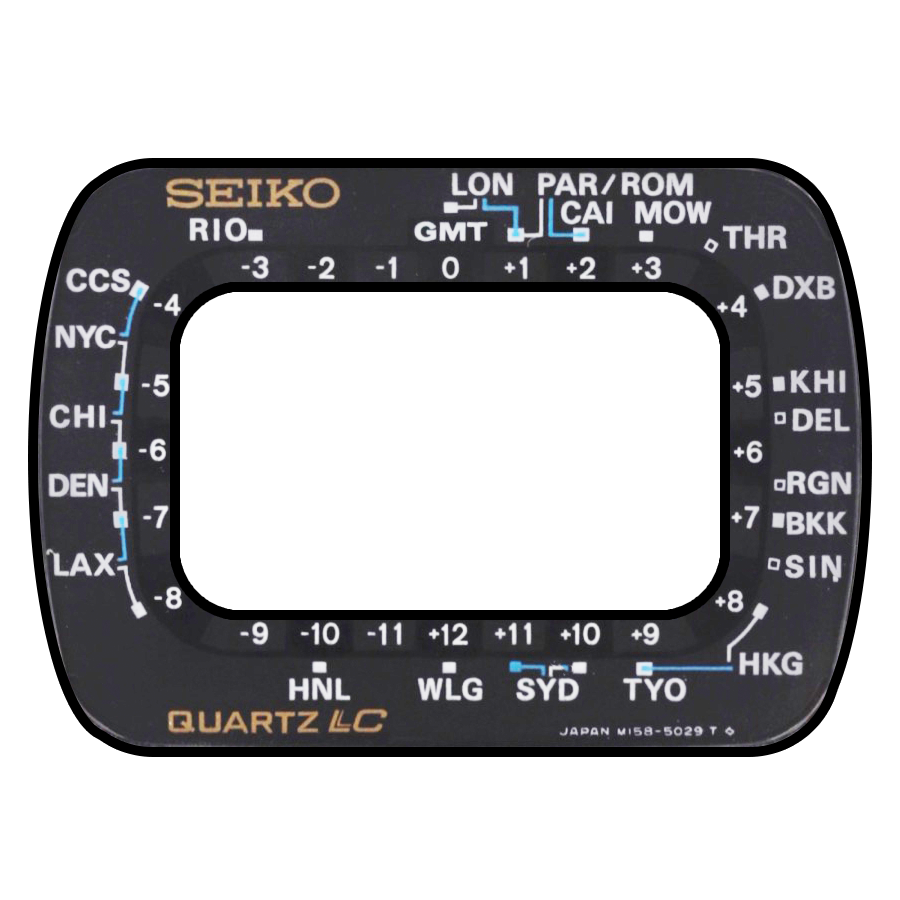
Min. production 21,038
Relative rarity across entire series 14.674%
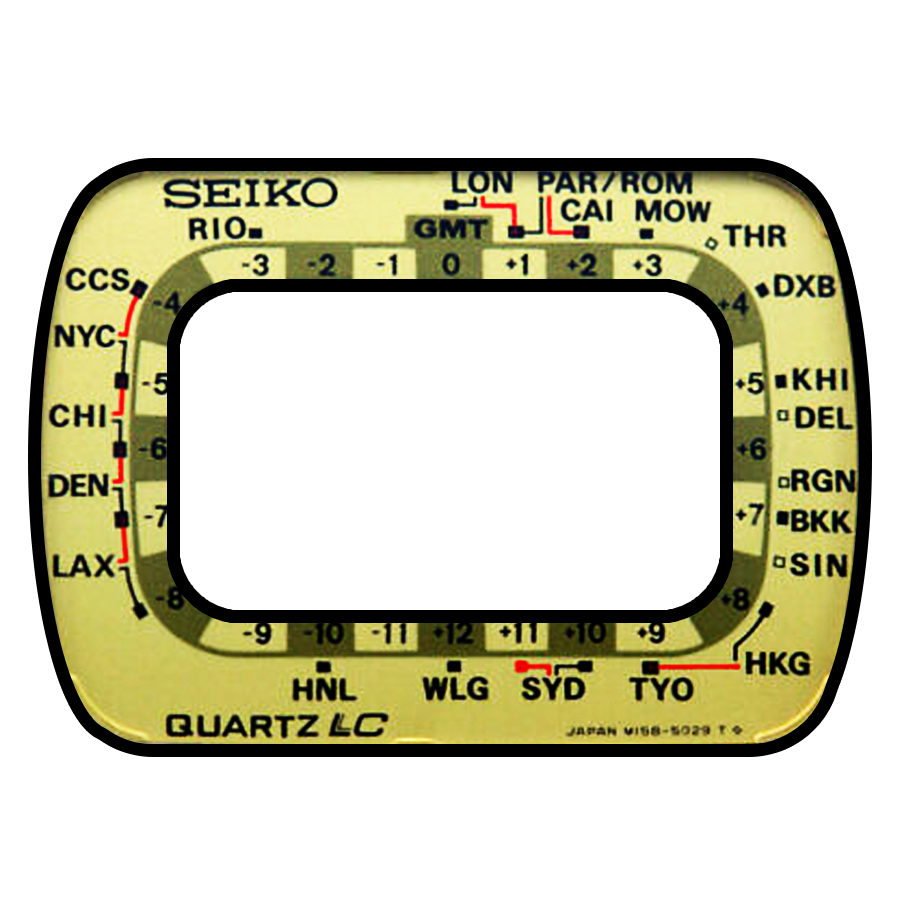
Min. production 16,029
Relative rarity across entire series 11.180%
Map of the Cities, 1977 - 1979
Additions in Green, Removals in Red
Version 3
The Alarm
In 1979 SEIKO again updated the cities dial frame for the new A358 series, replacing the M158.
This new series of watches maintained the abbreviated city names used on the M158-5009 with the following changes:
- Tehran (THR) Removed
- Wellington (WLG) Removed
Total Cities: 21 + GMT = 22
Total Markers: 28
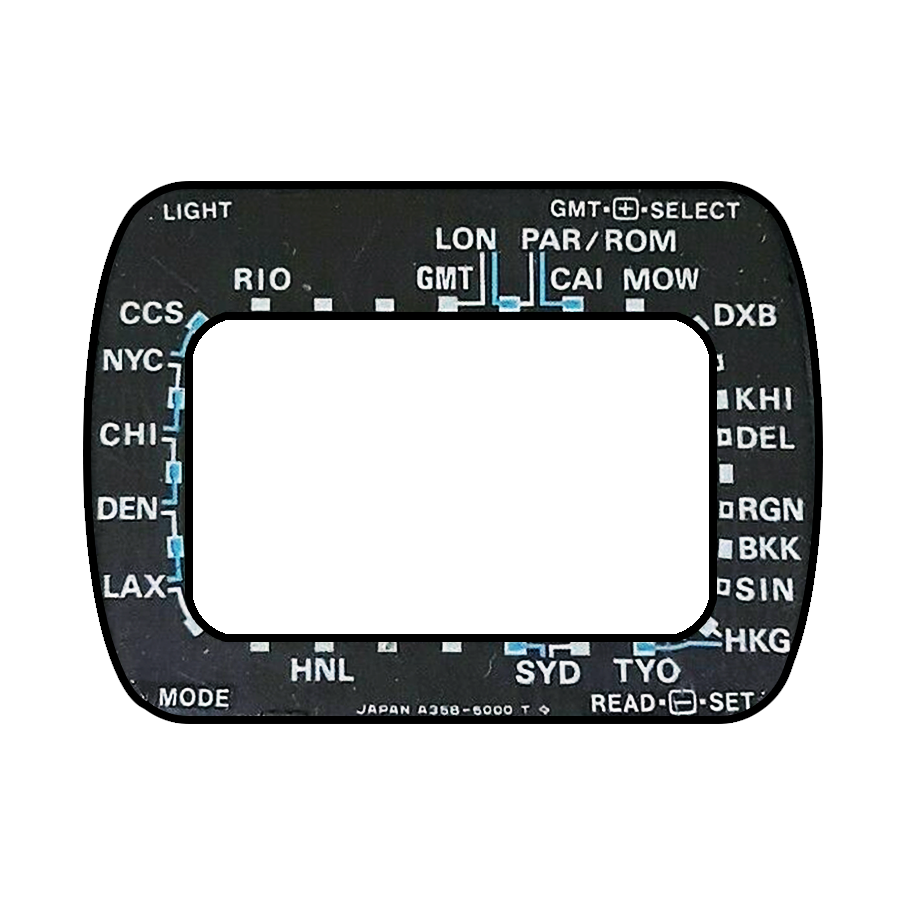
JAPAN A358-5000 T
Min. production 15,365
Relative rarity across entire series 10.717%
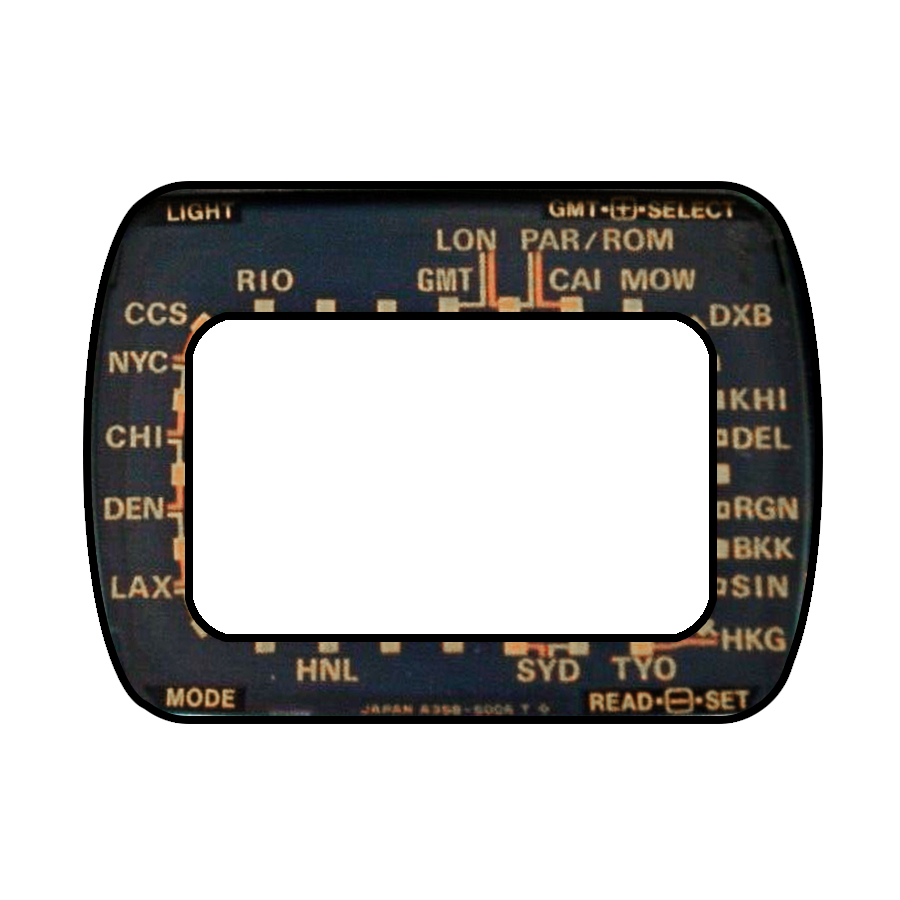
JAPAN A358-500A T
Min. production 2,364
Relative rarity across entire series 1.649%
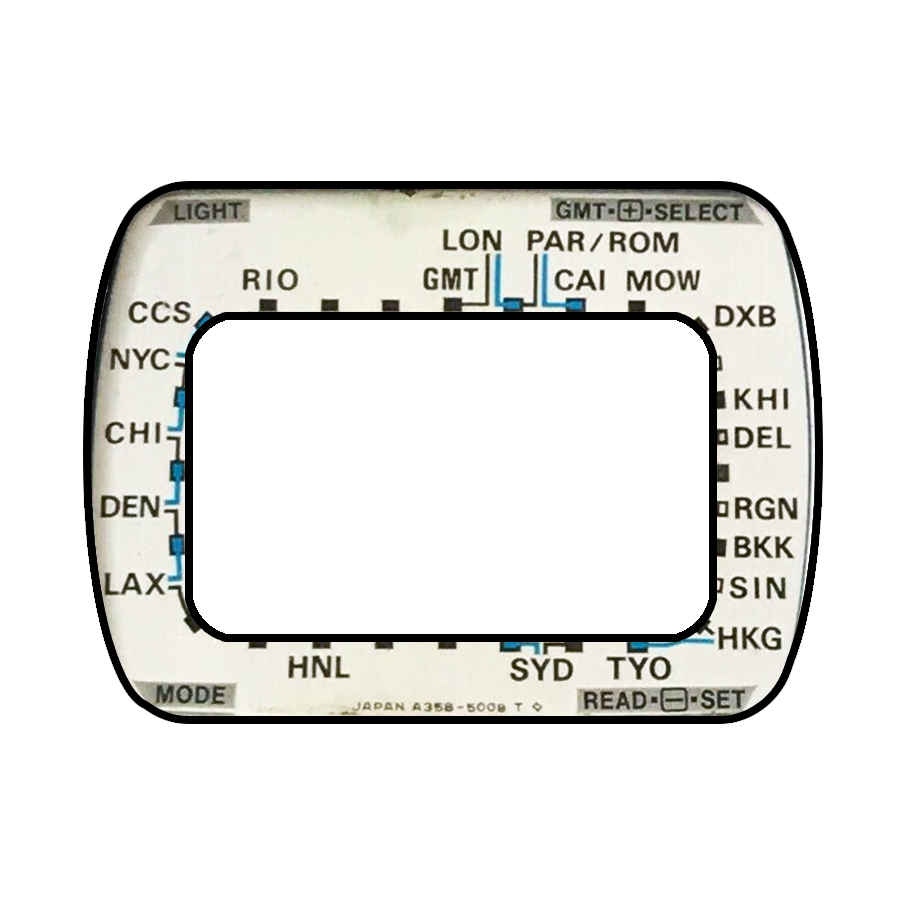
JAPAN A358-500B T
Min. production 5,909
Relative rarity across entire series 4.122%
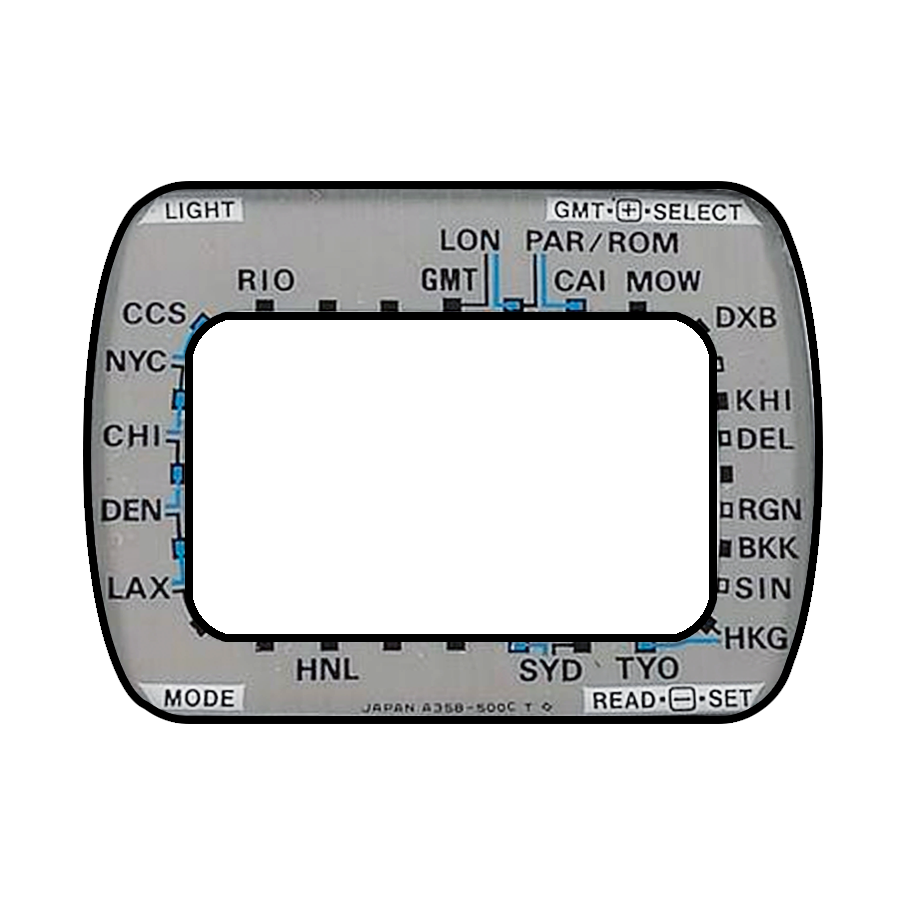
JAPAN A358-500C T
Min. production 5,909
Relative rarity across entire series 4.122%
Map of the Cities, April 1979 - 1980
Additions in Green, Removals in Red
Version 4
The WOPR (pronounced WHOPPER)
In 1979 SEIKO released another Digital World Time alongside the A358.
This is a unique watch in the Digital Generation, with no direct predecessor or successor.
The dial frame on this watch was re-imagined.
Because there was a full map screen on the watch display that handled the selection of time zone, the reference cities around the edge of the dial are less important.
GMT/London moved to the bottom of the dial frame, and the time zones are marked around the dial counter-clockwise.
This is opposite of all other watches in this series.
Compared to the A358, we see slightly more simplification in the marked reference cities.
- Rangoon (RGN) Removed
- Singapore (SIN) Removed
Total Cities: 19 + GMT = 20
Total Markers: 0
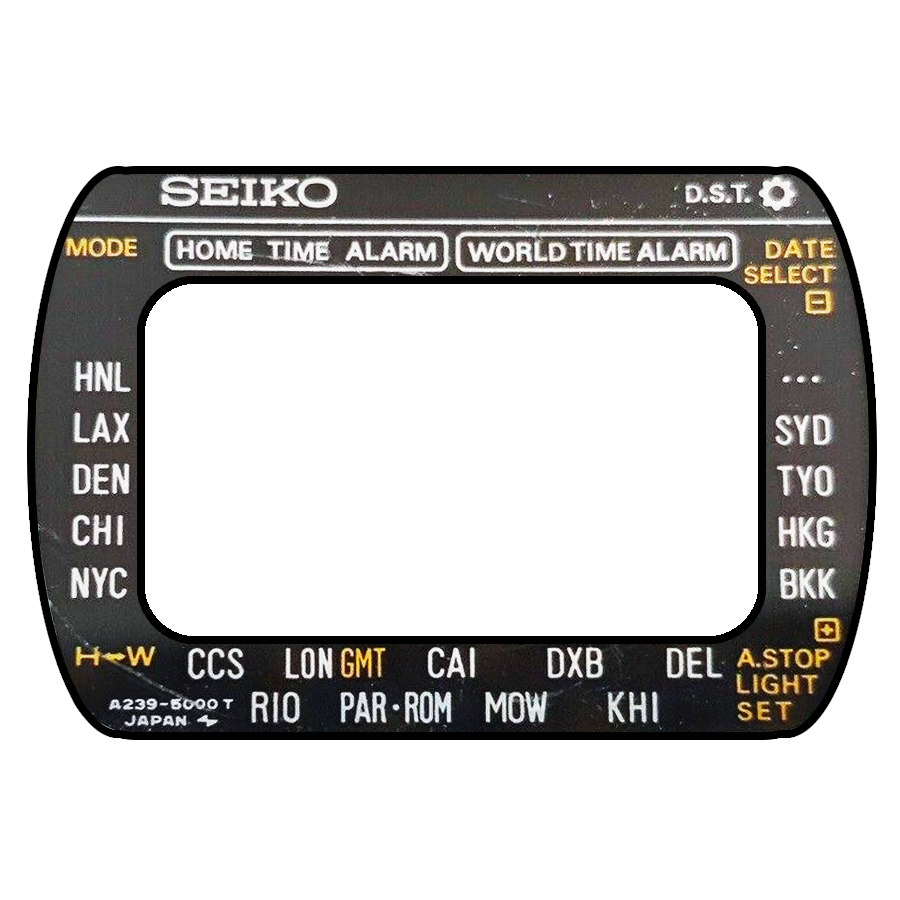
Min. production 17,762
Relative rarity across entire series 12.389%
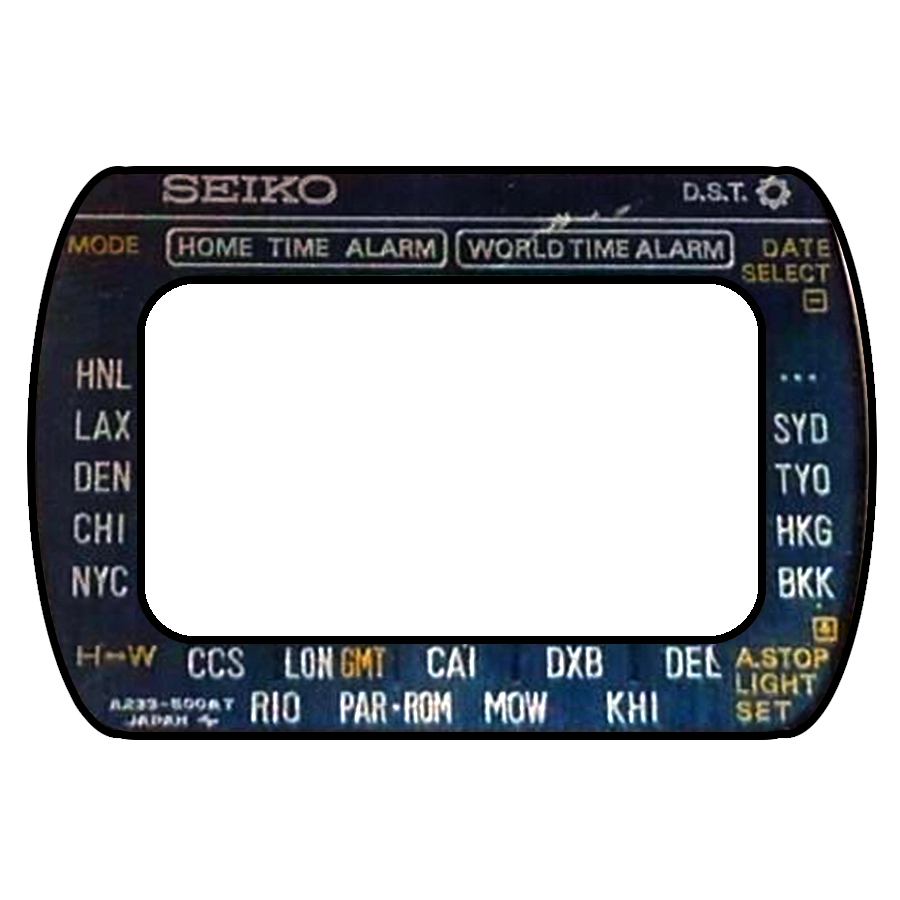
Min. production 25,835
Relative rarity across entire series 18.020%
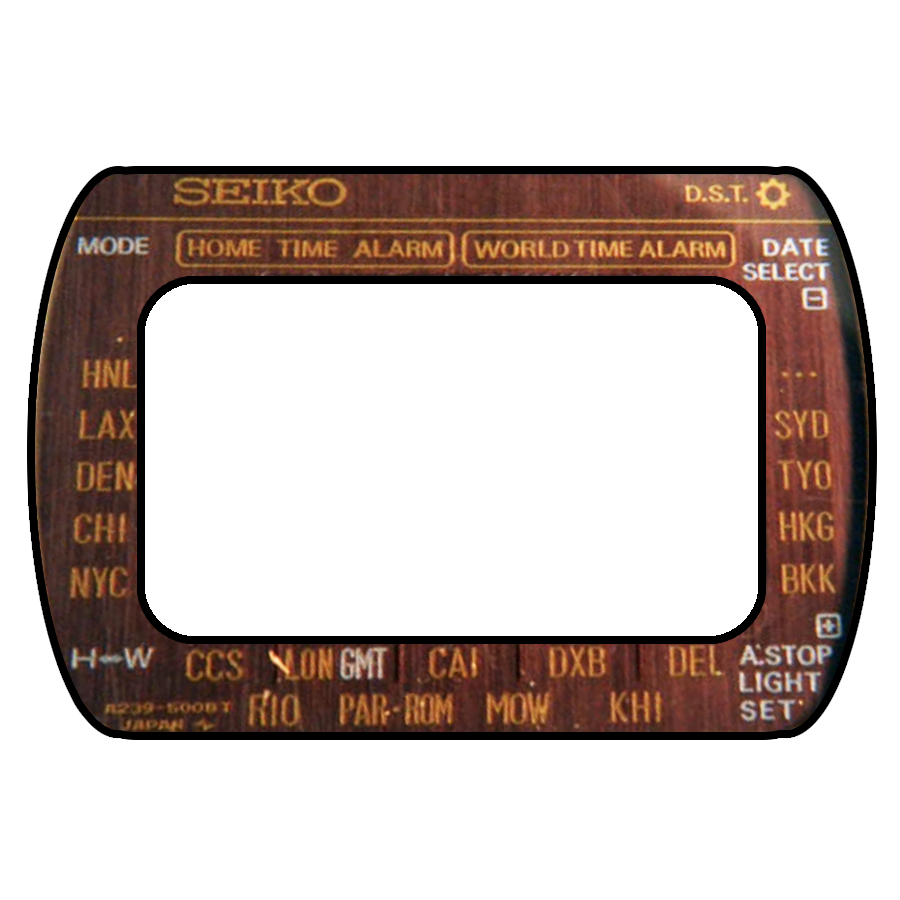
Min. production 12,110
Relative rarity across entire series 8.447%
Map of the Cities, December 1979 - 1980
Additions in Green, Removals in Red
Version 5
The TWA
In 1984 SEIKO started production of the A708, a budget world time option without alarm. This watch was produced through 1988. It is the successor of the A358 and reminiscent of the original M158-5000 in case design and size.
The dial frame on this version returned to full cities names, at least on the 5000 models.
There are 5010 models, but no photos have been found as of this writing.
The changes include:
- Tehran is added back
- Peking is added for the first time
- Guam is added
- Anchorage is added
Total Cities: 23 + GMT = 24
Total Markers: 16
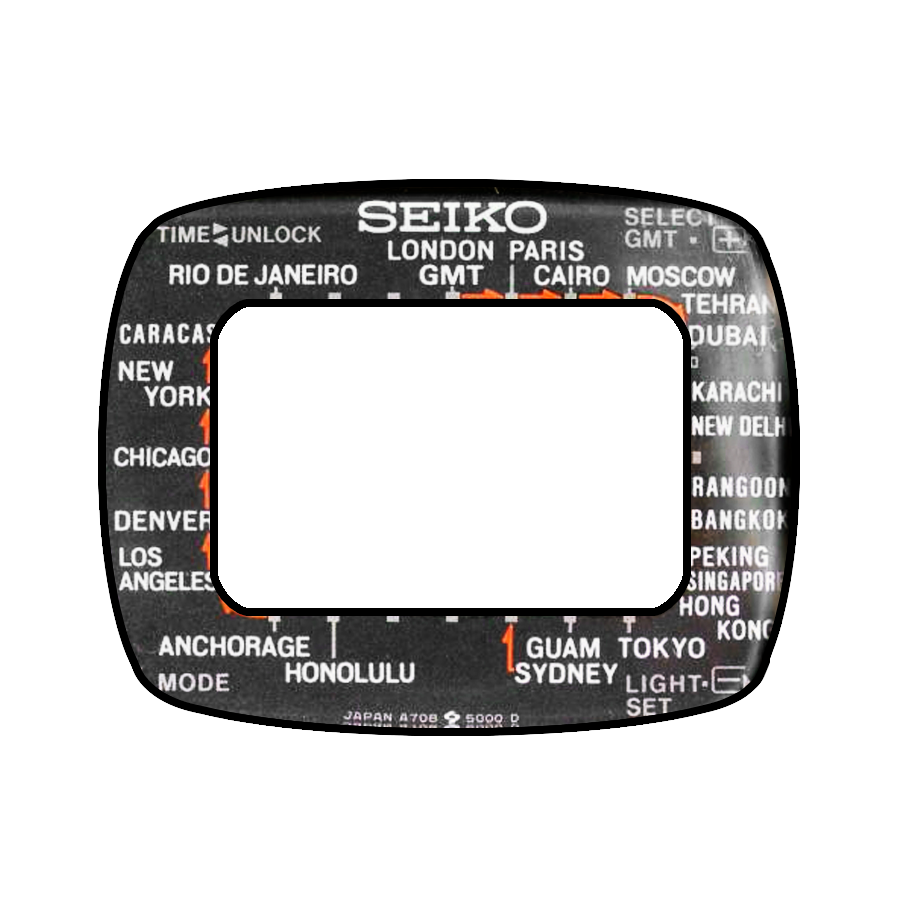
Min. production 4,847
Relative rarity across entire series 3.381%
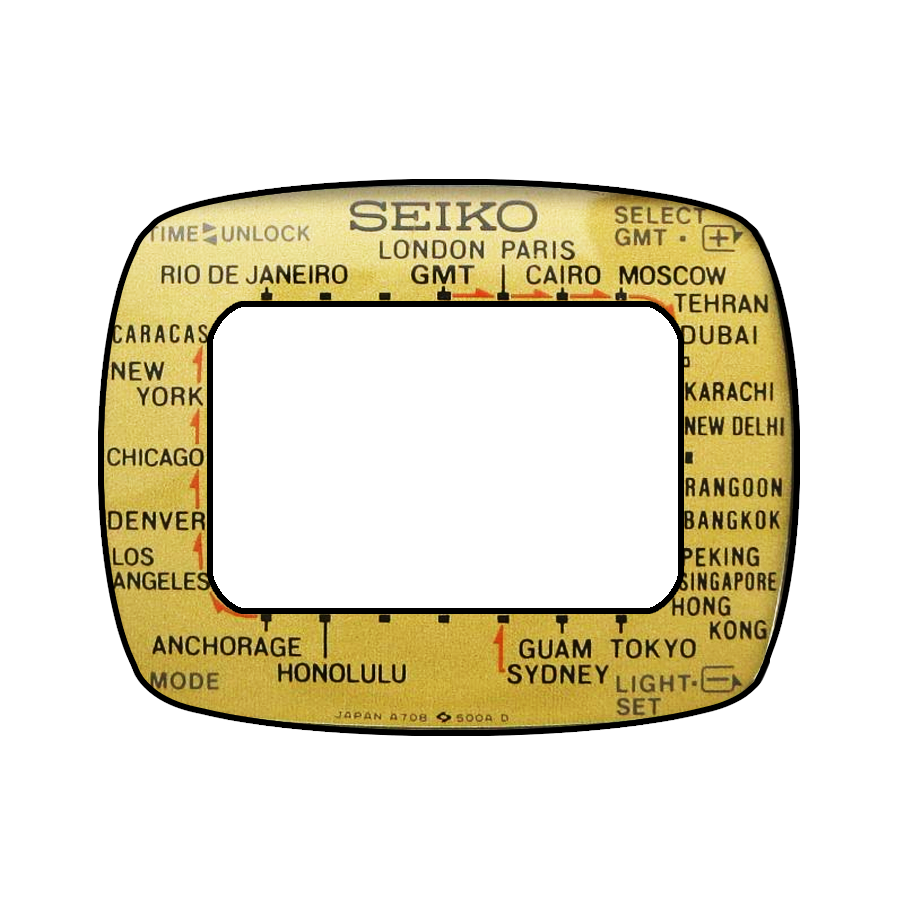
Min. production 4,039
Relative rarity across entire series 2.817%
Map of the Cities, 1984 - 1988
Additions in Green, Removals in Red
Version 6
The Frankenstein
In 1984 SIEKO produced the A718 models as premium alternatives to the A708.
These watches are exceedingly hard to come by.
Unlike the A708, the dial frame cities are again abbreviated.
This model is referred to as the Frankenstein, in part due to the prominent pushers, reminiscent of the pegs in Frankenstein's monster's head and neck, and in part because this is the first model to include Germany (Frankfurt) as a reference city.
The changes compared to the A708 include:
- Tehran is added back
- The Paris/Rome time zone is updated to FRA/PAR/ROM (adding Frankfurt, Germany)
- Peking is added
- Anchorage is added
- The New York time zone is updated to NYC/YUL (New York/Montreal)
- The Rio de Janeiro time zone is updated to BUE/RIO (Buenos Aires/Rio de Janeiro)
Total Cities: 26 + GMT = 27
Total Markers: 28
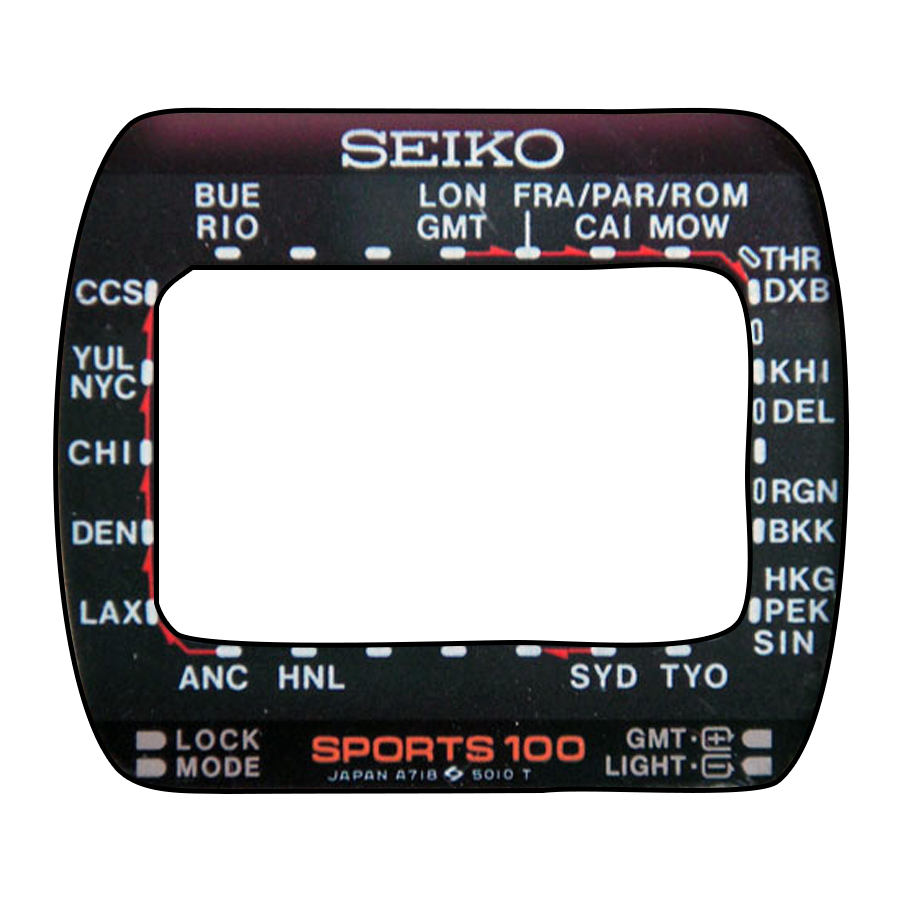
Min. production 8,629
Relative rarity across entire series 6.019%
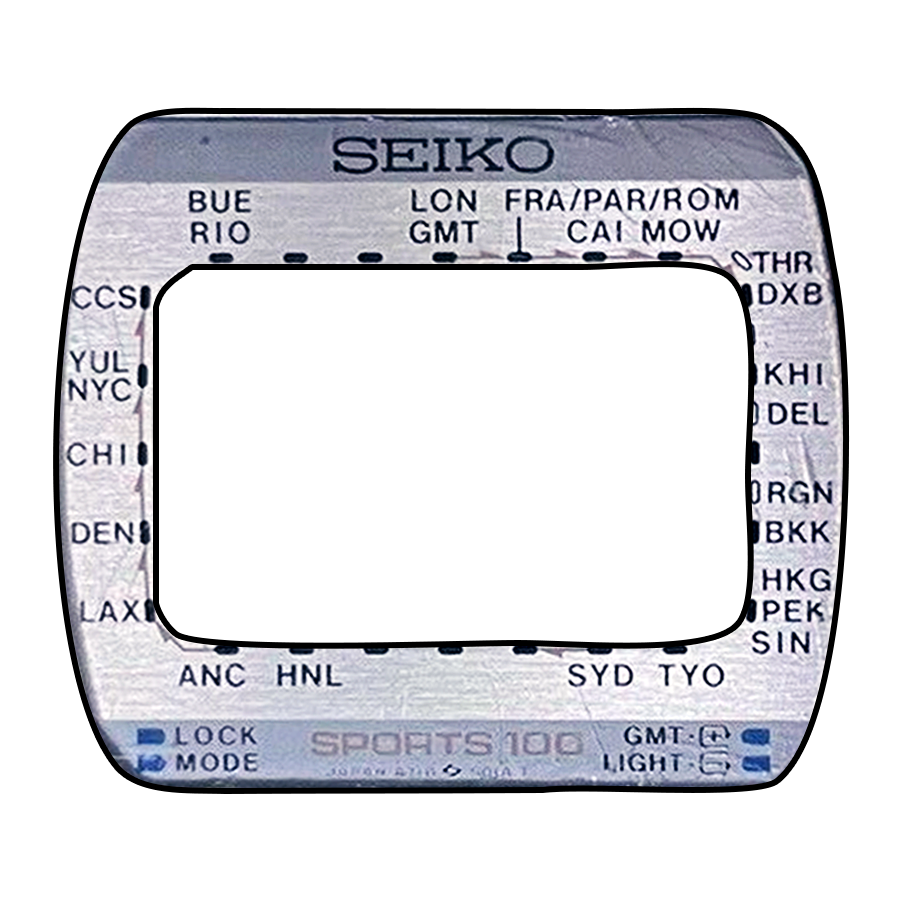
Min. production 4,315
Relative rarity across entire series 3.009%
Map of the Cities, 1984
Additions in Green, Removals in Red
Version 7
The John Cleese
The A718-5030 is an alternate version of the A718-5010, with a different case, a juggling of the functional indicators, and the removal of the prominent SPORTS 100 label at the bottom of the dial frame.
This version is often referred to as the "John Cleese", after the actor who wore it in the 1986 film Clockwise.
There is just one small change was made to the reference cities:
- YUL/NYC is flipped to read NYC/YUL (New York/Montreal)
Total Cities: 26 + GMT = 27
Total Markers: 28
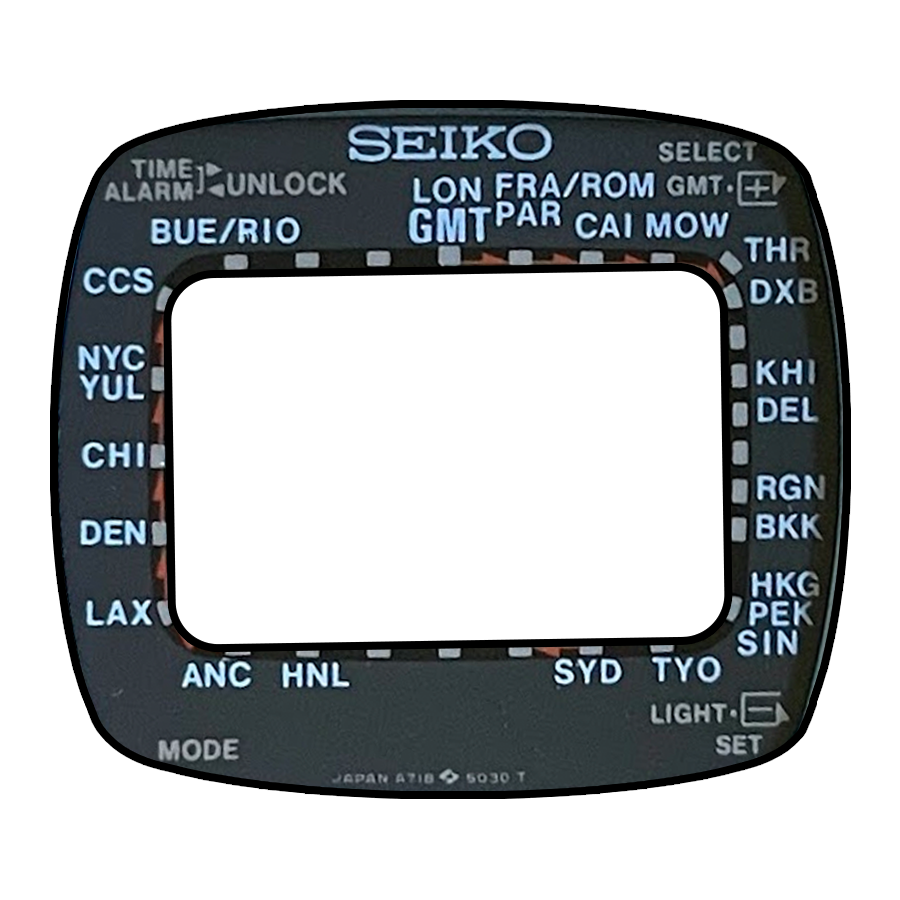
Min. production 1,333
Relative rarity across entire series 0.929%
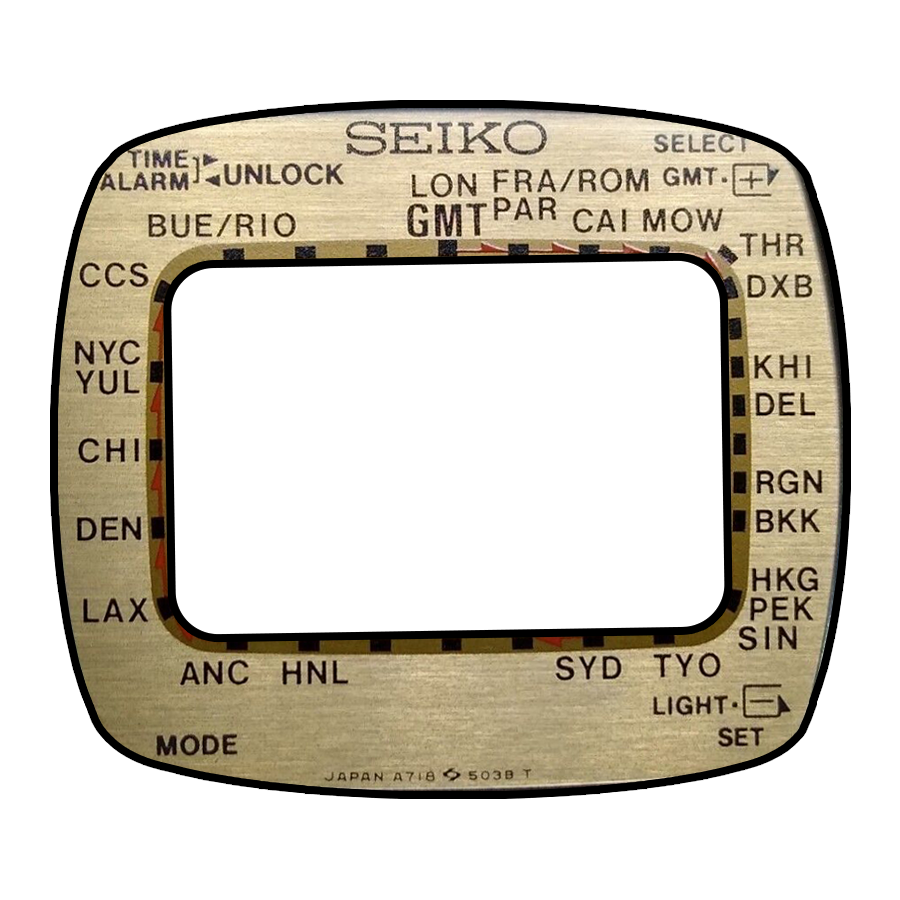
Min. production 999
Relative rarity across entire series 0.697%
Map of the Cities, 1984
Additions in Green, Removals in Red
Rarity Index
Based on cataloged production numbers, here is a list of dial frames by production rarity across the series.
NOTE: the rarity of a specific dial frame is based on the following calculation:
(((colorExamples / modelExamples) * modelProduction) / totalProduction) * 100
- colorExamples = Total Count of this specific Dial Frame Color in data set
- modelExamples = Total Count of this specific Model in data set
- modelProduction = Minimum Production for this specific Model
- totalProduction = Total (minimum) Production of all watches in this generation
| % of Total | Min. Production | Description | ||
|---|---|---|---|---|
| 1 |

|
0.697% | 999 | Gold Dial, A718-5030 |
| 2 |

|
0.929% | 1,333 | Black Dial, A718-5030 |
| 3 |

|
1.649% | 2,364 | Black Dial SGP, A358-500X |
| 4 |

|
2.817% | 4,039 | Gold Dial Frame, A708-5000 |
| 5 |

|
3.009% | 4,315 | Gray Dial, A718-5010 |
| 6 |

|
3.381% | 4,847 | Black Dial Frame, A708-5000 |
| 7 |

|
4.122% | 5,909 | Gray Dial SS, A358-5000 |
| 8 |

|
4.122% | 5,909 | White Dial SS, A358-5009 |
| 9 |
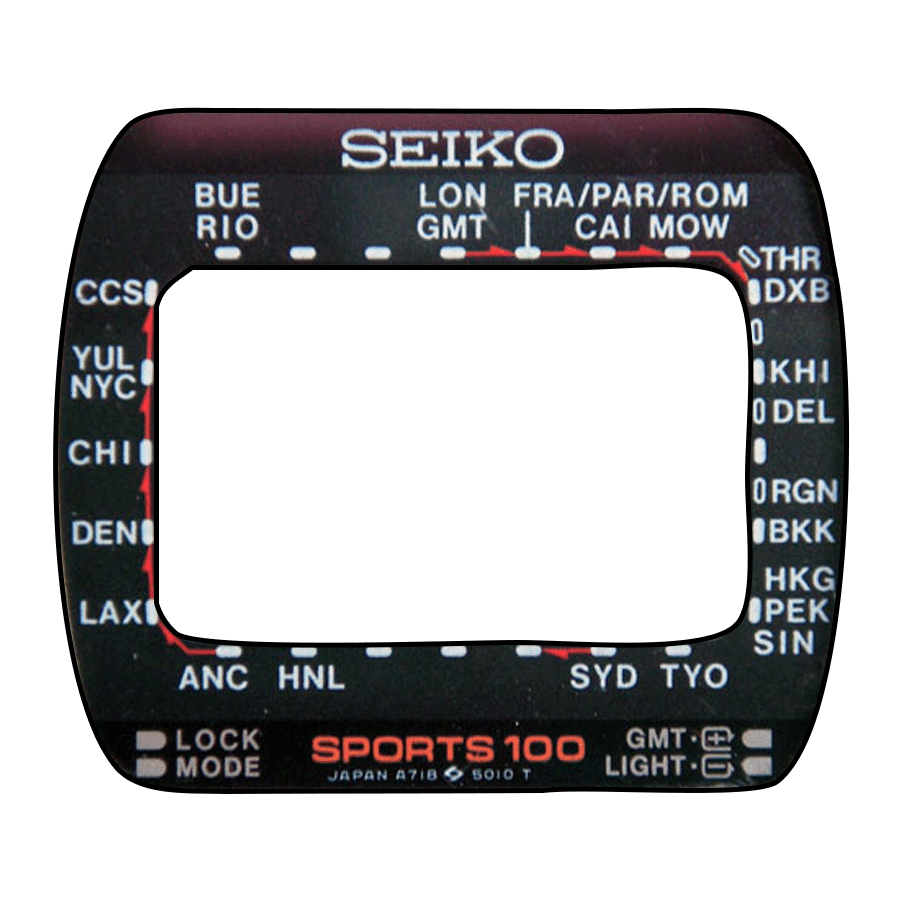
|
6.019% | 8,629 | Black Dial, A718-5010 |
| 10 |

|
8.447% | 12,110 | Brown Dial, A239-50XX |
| 11 |

|
10.717% | 15,365 | Black Dial SS, A358-500X |
| 12 |

|
11.180% | 16,029 | Gold Dial Frame, M158-5009 |
| 13 |

|
12.389% | 17,762 | Black Dial, A239-50XX |
| 14 |

|
13.753% | 19,717 | Black Dial Frame, Model(s) M158-5000 |
| 15 |

|
14.674% | 21,038 | Black Dial Frame, M158-5009 |
| 16 |

|
18.020% | 25,835 | Blue Dial, A239-50XX |
Related Articles
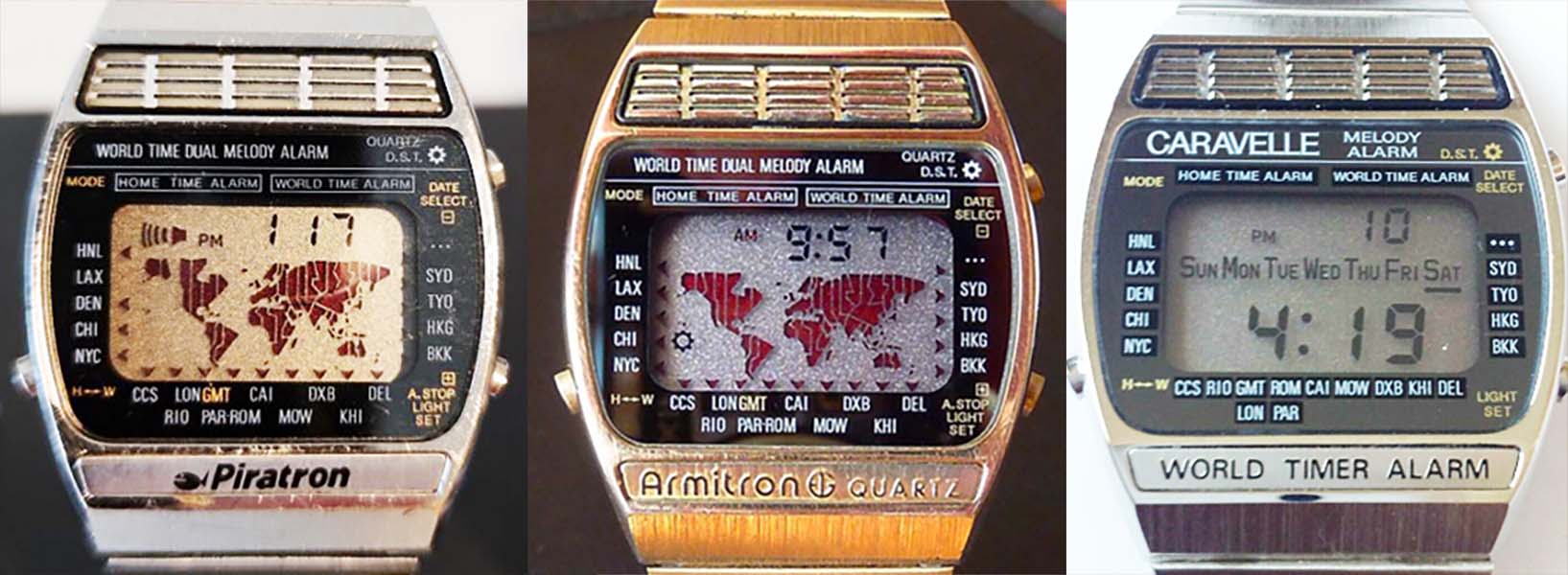
Counterfeits and Copies of The Seiko A239
As the saying goes, imitation is the highest form of flattery. And the SEIKO A239 had quite a few admirers.
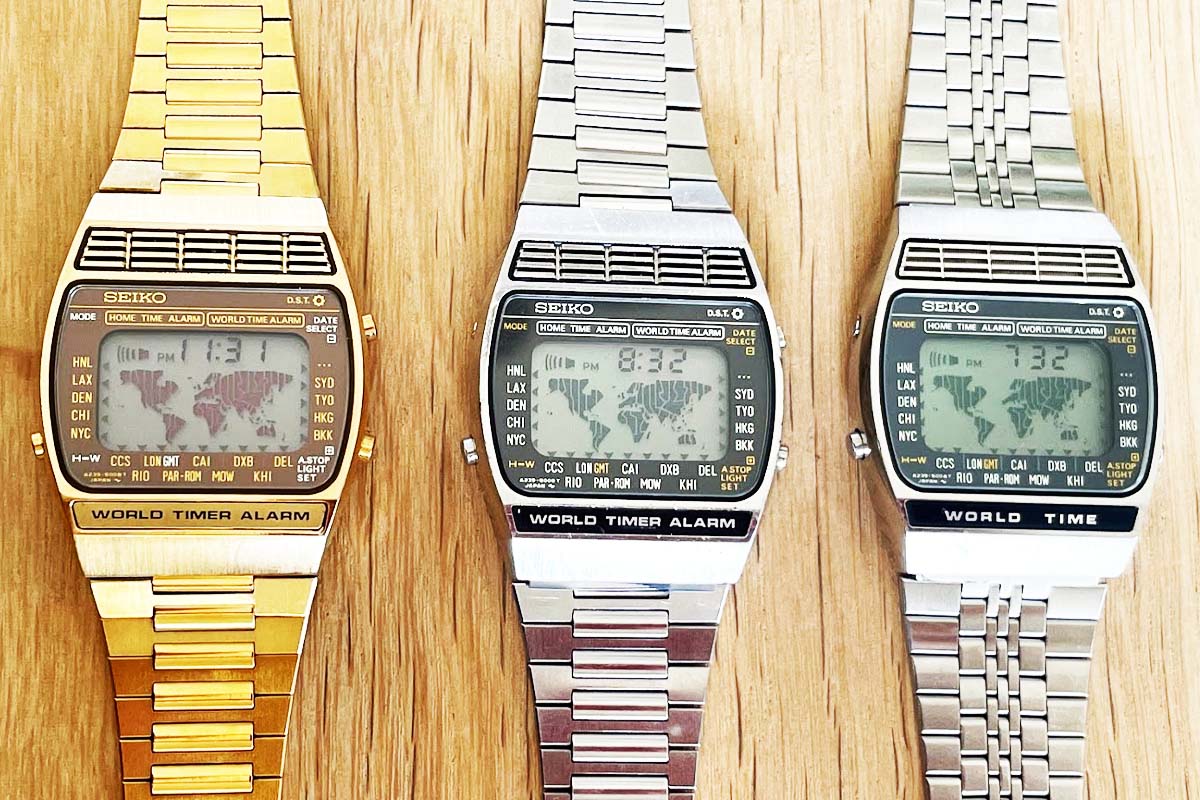
The Seiko World Time A239-50XX - The Atlas
All about the 3rd series of digital LCD world time watch from SEIKO, produced in 1979
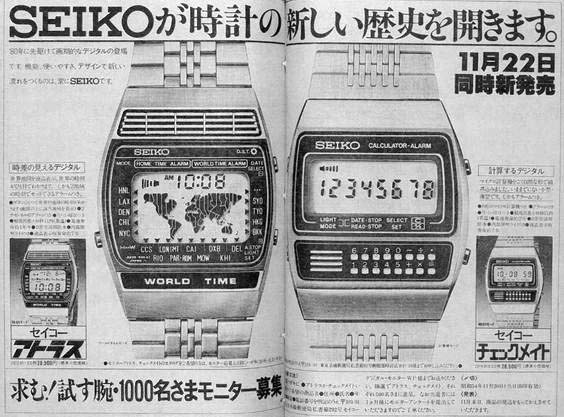
Old Ad Scans: Seiko World Time A239-50XX
A small collection of ad and catalog scans of the SEIKO World Time A239-50XX
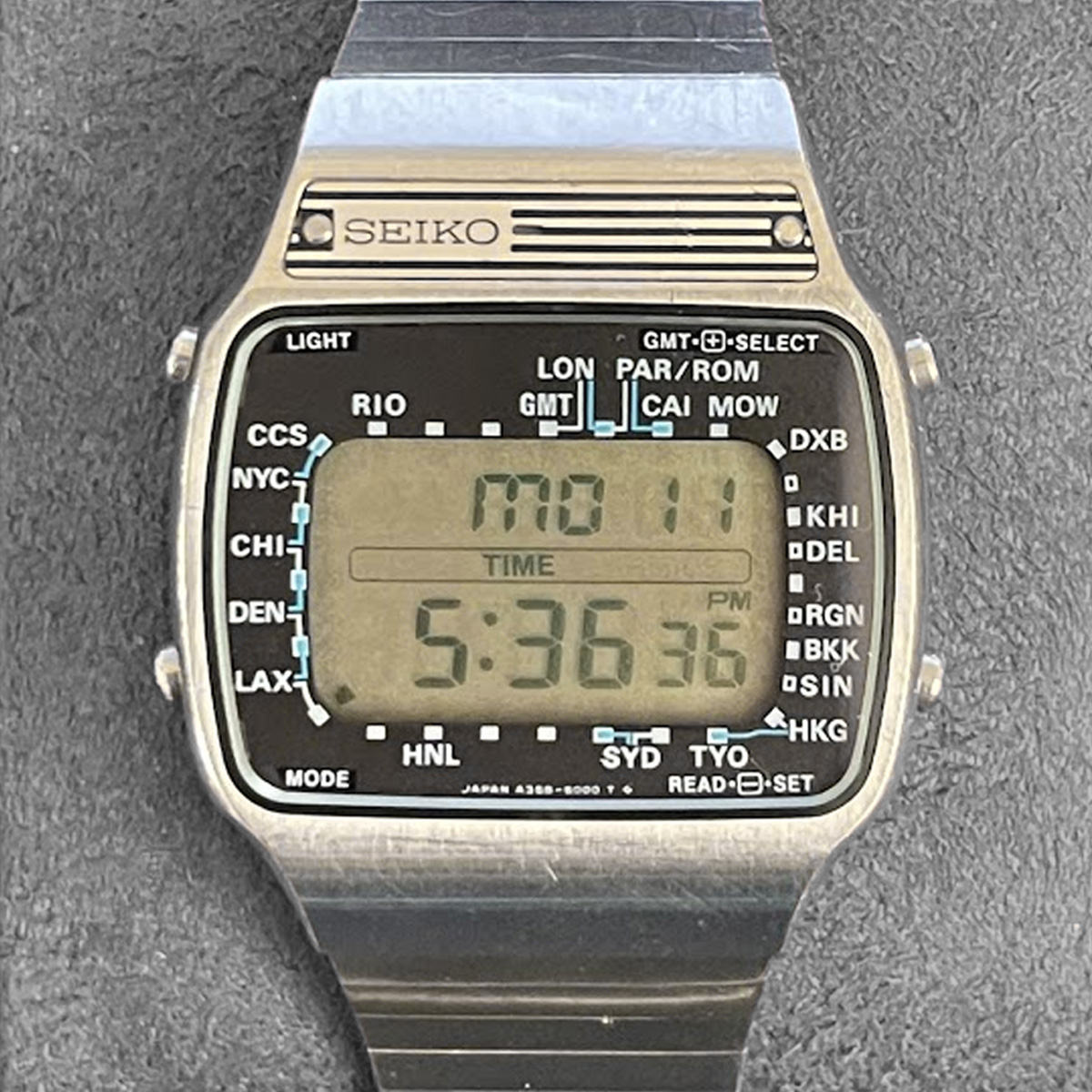
The Seiko World Time A358-500X - The Alarm
All about the 2nd series of digital LCD world time watch from SEIKO, produced in 1979
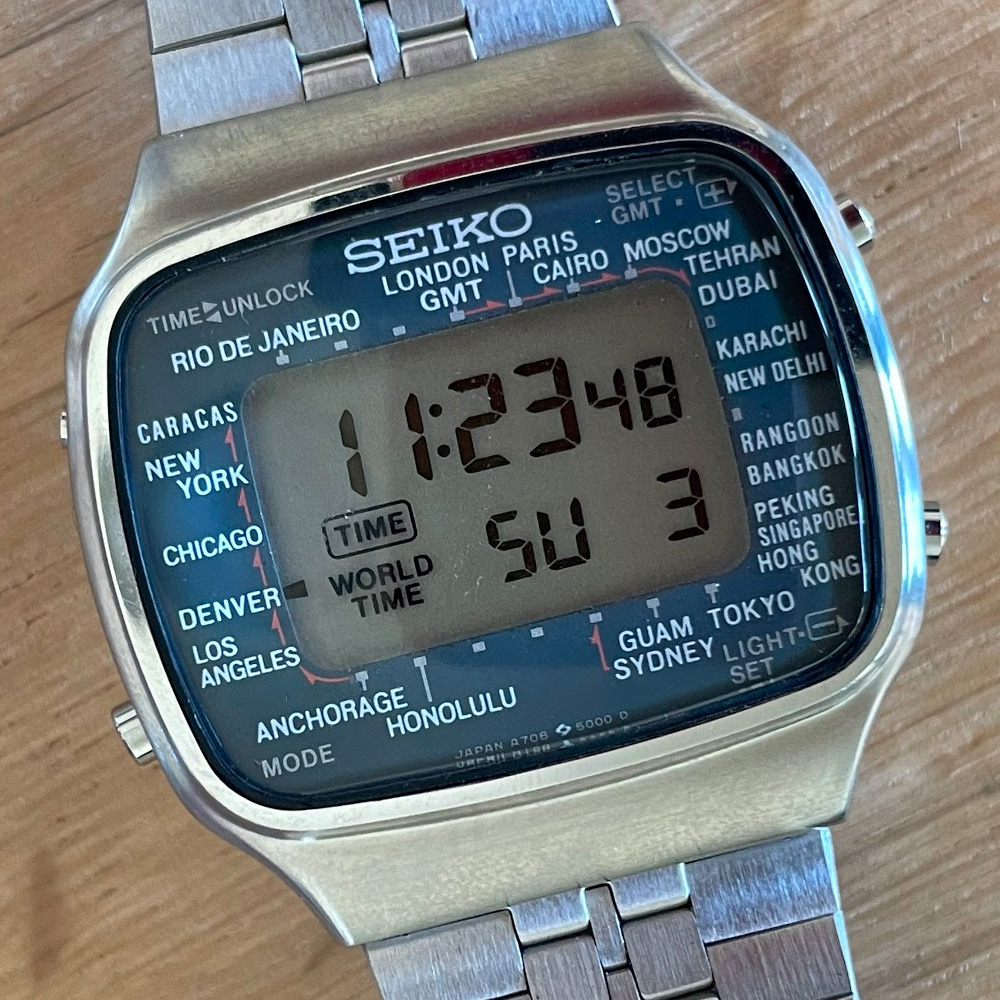
The Seiko World Time A708-5000 - The TWA
All about the 4th series of digital LCD world time watch from SEIKO, produced from 1984 through 1988
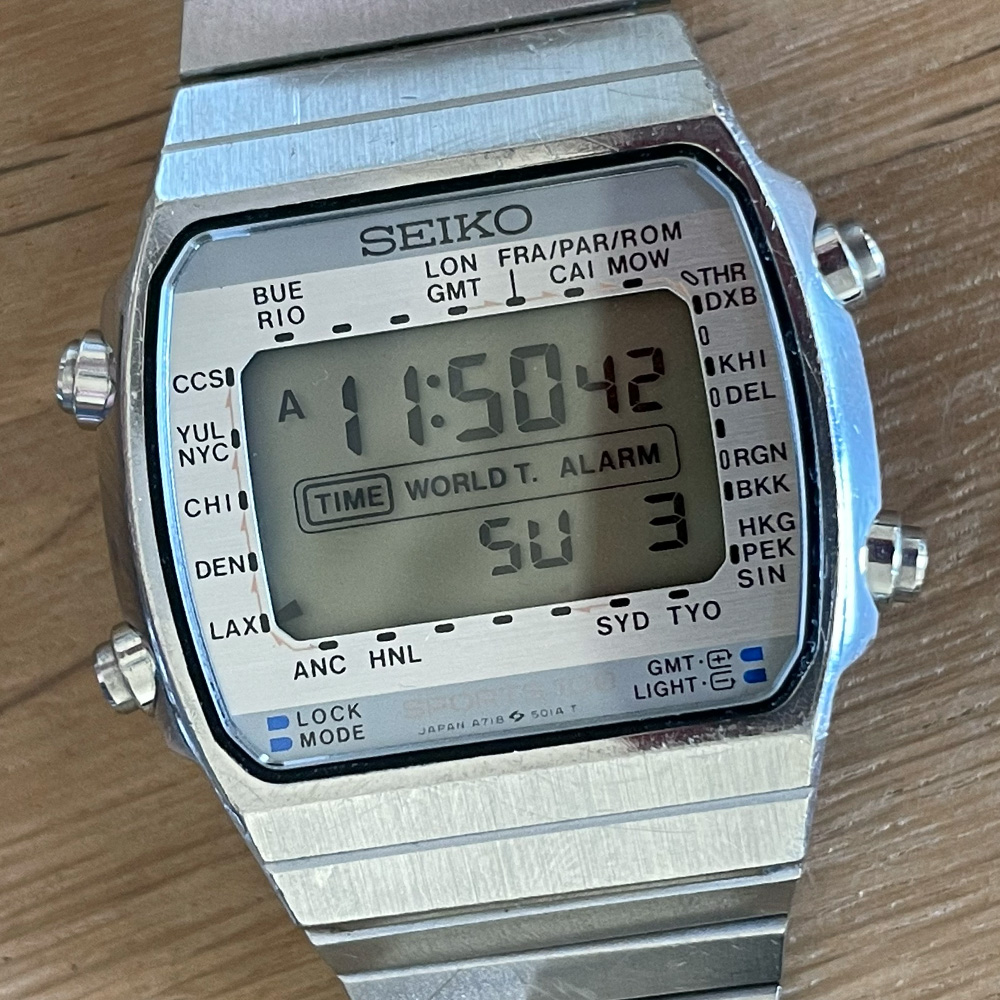
The Seiko World Time A718-5010 - The Frankenstein
All about the A718-5010 digital LCD world time watch from SEIKO, produced in 1984

The Seiko World Time A718-5030 - The John Cleese
All about the A718-5030 digital LCD world time watch from SEIKO, produced in 1984
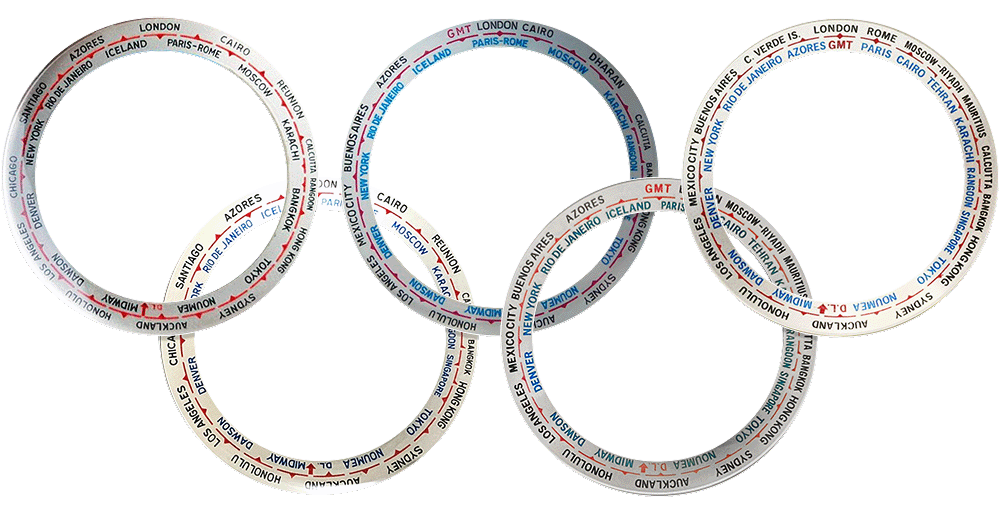
Reference Cities - Changes over the Years
A history of changes to the Cities Bezel on SEIKO World Time mechanical watches from 1964 through 1976

Counterfeits and Copies of The Seiko M158 PAN AM
As the saying goes, imitation is the highest form of flattery. And the SEIKO M158 had quite a few admirers.
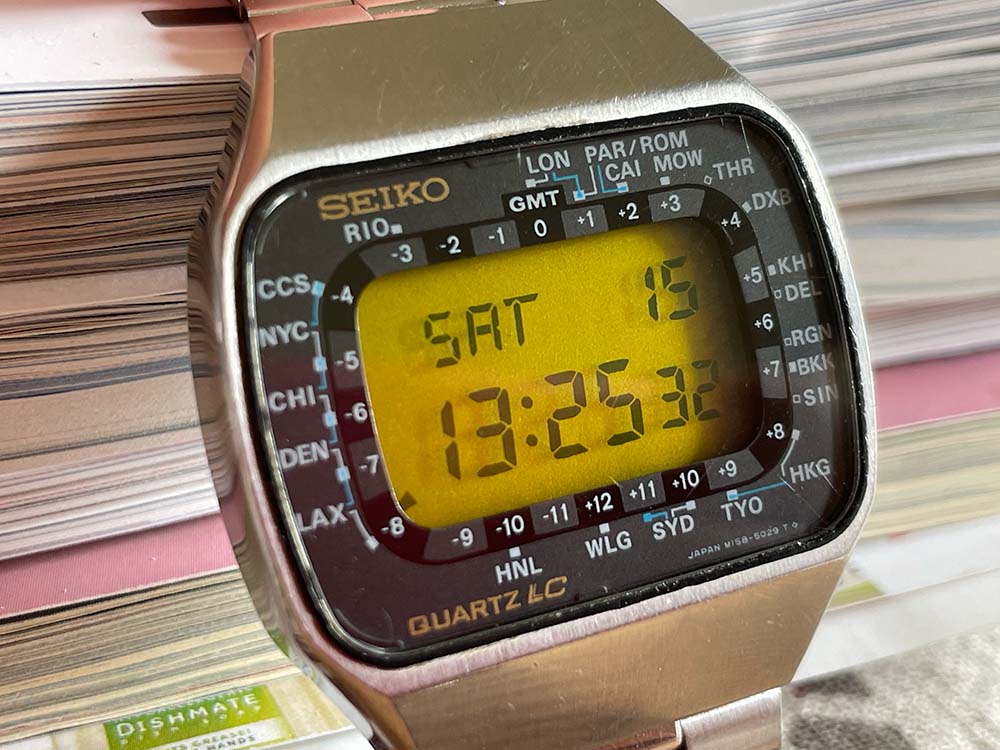
The Seiko World Time M158-500X - PAN AM
All about the 1st series of digital LCD world time watch from SEIKO, produced in 1977
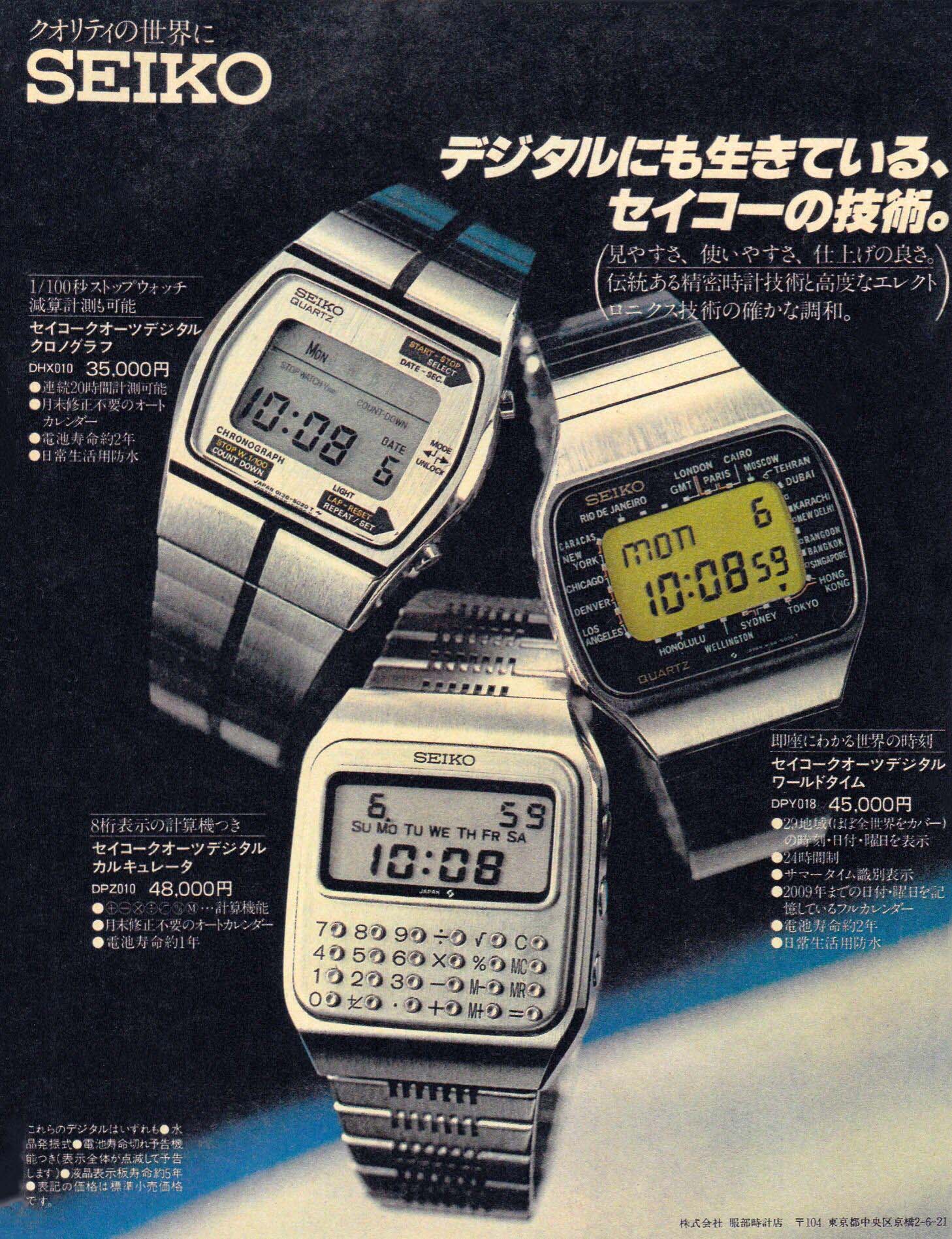
Old Ad Scans: Seiko World Time M158-500X
A small collection of ad and catalog scans of the SEIKO World Time M158-500X

Authenticating The Seiko World Time M158-500X
Tips on confirming the originality of your Seiko World Time M158-5000 and M158-5009